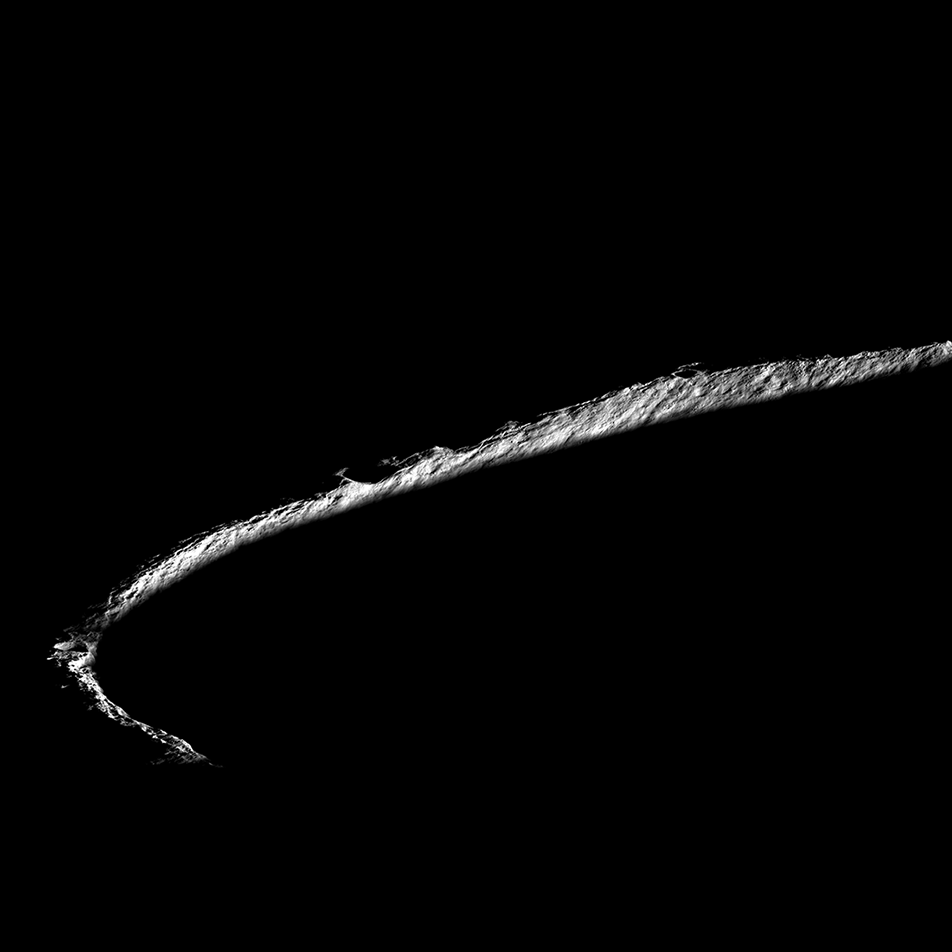Shackleton Crater’s Illuminated Rim & Shadowed Interior

| Credit | NASA/GSFC/Arizona State University |
|---|---|
| Language |
|
Shackleton Crater is an impact crater that lies at the lunar South Pole. While peaks along the crater's rim are exposed to almost continual sunlight, the interior is perpetually in shadow. This is because the Moon is only slightly tilted on its axis, at 1.5° compared to Earth, at 23.5°. If you were to stand at the Moon’s South Pole, the Sun would skim the horizon all year long, never fully rising or setting. Three points on the crater’s rim remain collectively sunlit for more than 90% of the year due to this tilt.
With the Sun at such a low angle, it can never reach the floors of some deep craters. Places the Sun never reaches are known as permanently shadowed regions (PSRs). PSRs like Shackleton crater are thought to hold water ice and other materials that turn easily into gas because these regions are so cold and dark that gas molecules that make their way into these regions freeze onto the surface. If significant water ice deposits are confirmed to exist in PSRs, they could be used as a resource for future human exploration. Layers of ices in PSRs, like Shackleton Crater, may also hold records of what has been happening in the lunar environment for long periods of time.
Future Artemis missions to the Moon’s South Pole may use these highly illuminated regions to make use of solar energy and support a base camp with trips into shadowed regions to determine what the low-temperature crater holds.The South Pole also provides near constant communication with Earth.
Author: Caroline Capone
Science Advisors: Sarah Valencia and Andrea Jones
Learn more: On the Rim!
